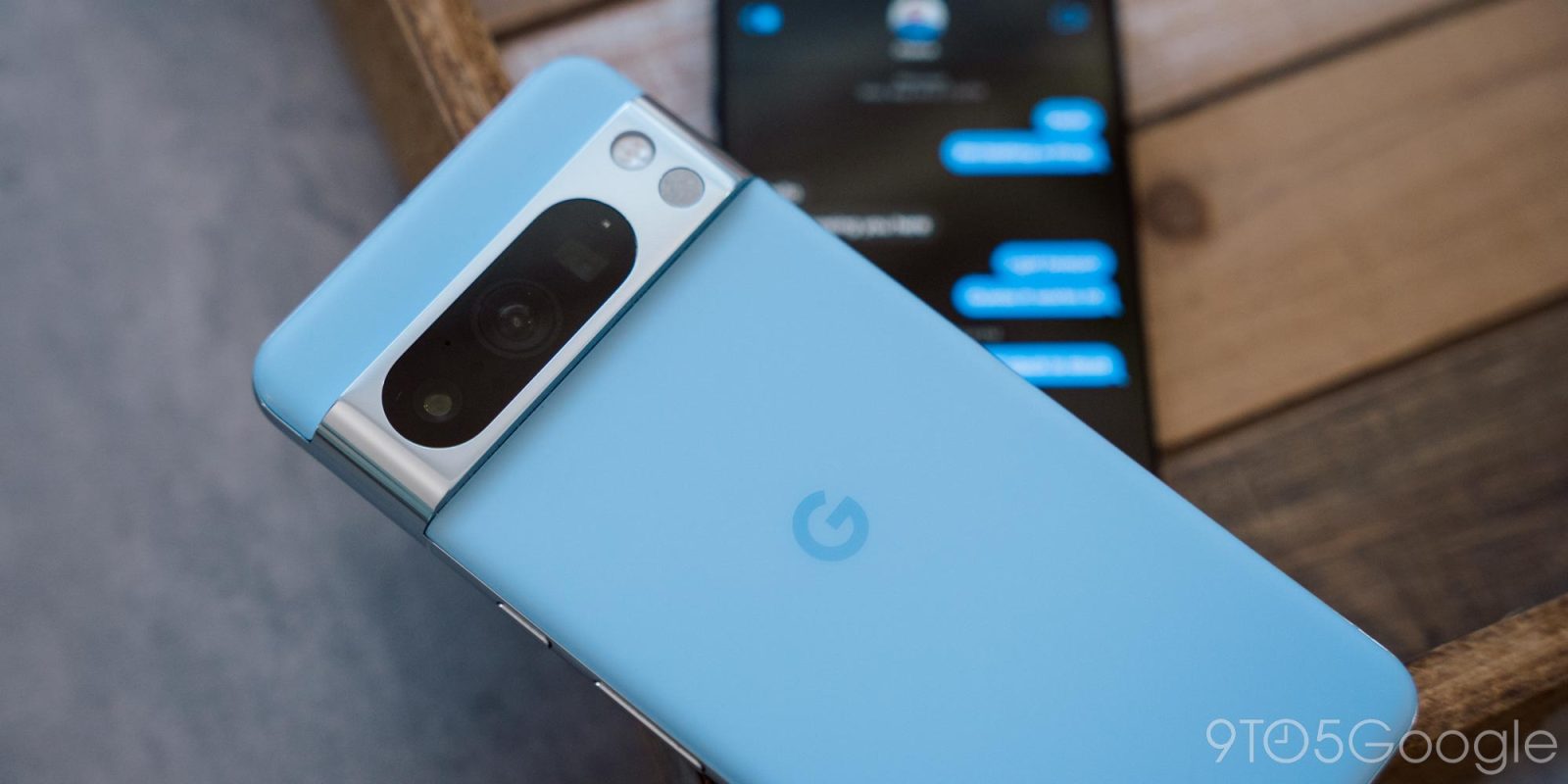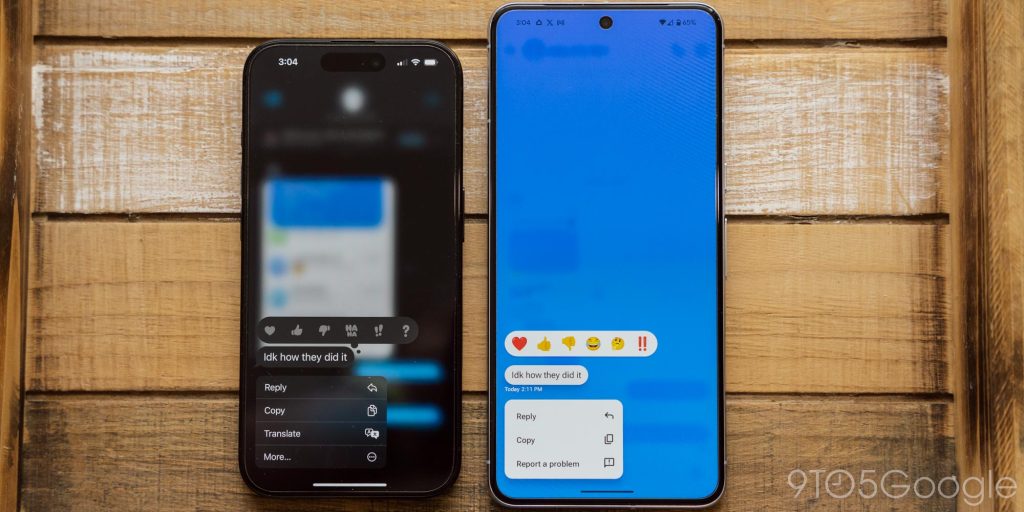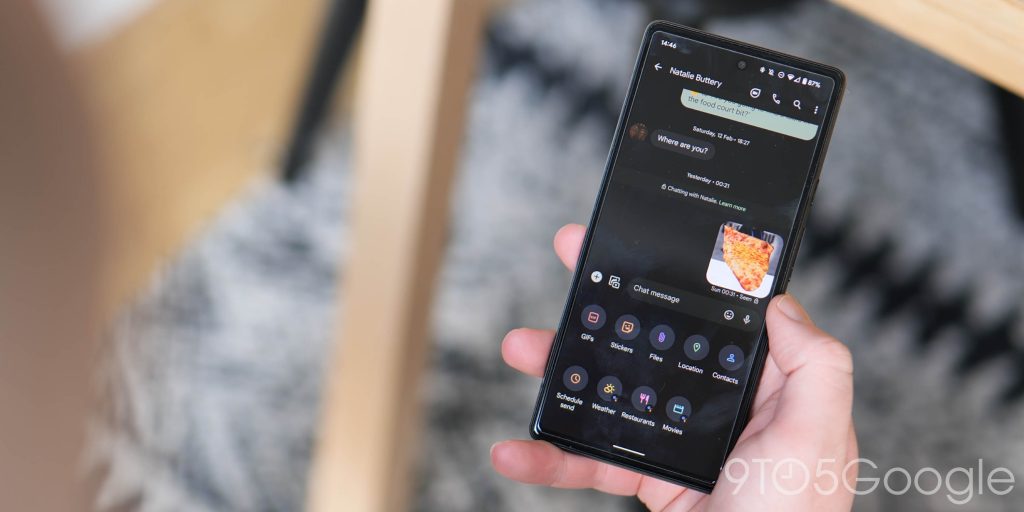
Over the past several weeks, iMessage for Android has been a big topic of discussion and, for many, it comes back to why Android users seem to want iMessage so much. Personally, I don’t. iMessage for Android just happens to, somehow, be the path of least resistance when it comes to using a decent messaging app with people.
This issue of 9to5Google Weekender is a part of 9to5Google’s rebooted newsletter that highlights the biggest Google stories with added commentary and other tidbits. Sign up here to get it delivered to your inbox early!
The conversation about iMessage for Android really boils down to the popular preference. Because the iPhone is so popular, especially among younger users, iMessage is also quite popular. And, really, I don’t think that’s because it’s an objectively good messaging service.
iMessage is fine, but it’s very overrated.
As I’ve been using iMessage more through my time with iPhone 15 Pro, Beeper, and a MacBook Air, I’ve gotten more familiar with how it all works. And, really, I just keep coming back to the conclusion that it’s not really doing anything special. iMessage has its nice bits, like Apple Pay integration, a quick and easy way to share location, and integration with third-party apps.
But, outside of that, iMessage feels pretty basic. There’s nothing about it that’s better than other messaging apps, and it falls way behind in other areas. Besides the fact that it’s restricted to Apple’s walled garden, iMessage also limits emoji reactions – “tapbacks” – to one of just six options, and they’re not even good options. To this day, I still don’t know how a double exclamation point earned itself a spot in such an exclusive group when literally not a single emoji face is used.

If I had the choice, I’d rather use a more fully-featured, cross-platform messaging service. Telegram has been my go-to for a while, because it has fun reactions, good features for groups, and great multi-device support. WhatsApp is also pretty good, and I’ve found myself using it a lot because a lot of my friends happen to use it.
Yet, I’ve also found myself trying to find a way to keep iMessage on my Android phone. Why?
iMessage, for whatever reason, seems to have this hold over people. I don’t understand why so many people feel they can’t use anything but the “Messages” app on their iPhone, or have such strong feelings against just downloading another messaging app, but that very much exists. I only use iMessage to talk to a handful of people, and it’s really just so I can make sure they see my messages, as the other platforms I’ve used to contact them just don’t seem to get the same attention.
I think that a big part of the reason why folks want to use just one messaging app is clear. Back in the days where all we had was SMS, all you needed was to send a message and you knew they’d get it. Now, you have to know where to use that number. That’s the one place I think Apple’s strategy really works. iMessage is built on top of the idea that SMS is, for now, pretty much unavoidable, with iMessage acting as the upgrade and SMS acting as the fallback.
That is appealing in today’s littered landscape of messaging apps, and something that most apps on Android are ignoring. Only in Google Messages are we seeing Apple’s approach mirrored, with RCS acting as the upgrade, and SMS as the fallback.

When Apple brings RCS to the iPhone next year, it stands to solve a lot of these problems, but in the meantime, it’s maddening that we still live in a world where reverse-engineering iMessage to make a client for Android is somehow working better for some users than just having iPhone users download another app. And, somehow, those same iPhone users don’t understand that. In a recent column, John Gruber asked that, if Android users wanted better cross-platform messaging, they’d simply ask their iPhone friends to download “WhatsApp or Signal or something,” as if that hasn’t been the problem this entire time.
Some people have just decided that they won’t use other messaging apps, regardless of how that affects anyone else. Somehow, in their minds, a friend putting in the money and effort required to move from their current phone to an iPhone is less than the simple act of downloading a new messaging app.
Case in point was a post I saw on Threads earlier this week which said:
I’m sorry, but I’ll never use WhatsApp or Telegram. If my “Android” friends don’t like it, I’m sorry. I’m not going to have multiple messaging apps on my phone just to accommodate someone else’s preferences.
Wow.
Personally, I just can’t imagine being a burden on someone else like that. I don’t want to have 15 different messaging apps on my phone, but if someone wants to talk to me on another app, so be it.
If everyone, both Android and iOS users, were willing to settle on even one cross-platform messaging app, it’d go a long way in making this whole conversation not exist in the first place.
The elephant in the room, of course, is that this is literally only a problem in the United States. Everywhere else in the world, folks are totally fine using messaging apps. WhatsApp is pretty popular worldwide, and there are regional favorites too. But, the point is, it’s only in the States that people seem to be against this idea. The answer for why is very much up for debate, but the conversation is, at this point, just getting exhausting.
This Week’s Top Stories
New updates to Google Messages
Google Messages is in the midst of rolling out a couple of new design updates, with shortcuts no longer appearing outside of the text box, and instead along the right side of the input field. Further, a new design for contacts in Messages is rolling out with images and more controls.
- Google Messages rolling out text field redesign with shortcuts bar
- Google Messages rolling out new contacts page with Material You carousel
Google Keep prepares lock screen integration
Meanwhile, Google Keep is getting some new functionality, with the app preparing support for Android 14’s new note-taking app role, which includes lock screen integration and better stylus support.
More Top Stories
- Hands-on: Video Boost on Pixel 8 Pro compared to the iPhone 15 Pro [Video]
- Comment: I’ll miss Google Podcasts for its simplicity
- Google Play Points users get 40% off Pixel 8, 8 Pro, and Tablet
- Pixel Watch UI goes blue, likely in preparation for Dynamic Color\
- Google Fiber 20 Gig with Wi-Fi 7 will cost $250/month in these cities
- Latest Google TV updates improve performance, Live tab adds ‘Recents’ section, more
- Pixel Launcher may soon let you relocate At a Glance widget as well as remove it
- Samsung’s December update is available for these devices
- Samsung revives $1,000 trade-in deal for the Z Fold 5, bringing it down to $650
- Galaxy Watch 5 and 5 Pro receive December security update
- Android readies ‘Private Space’ for apps you want to keep hidden
- ‘Experiments with Google’ is shutting down, moving to Labs
From the rest of 9to5
9to5Mac: 9to5Mac Product of the Year: The new 15-inch MacBook Air
Electrek: Chevy Blazer EV first drive – is it worth its $56k base price?
9to5Toys: Review: MAINGEAR’s MG-1 Gold delivers an immaculately pre-built PC with swappable front panels
FTC: We use income earning auto affiliate links. More.




Comments